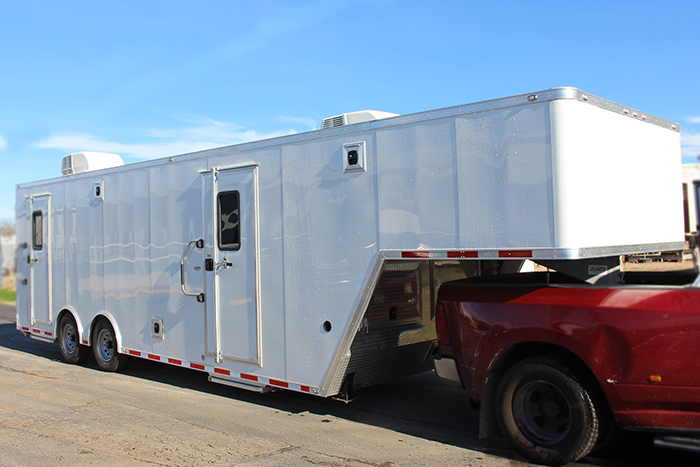
This trailer will house the NOAA TOPAZ mobile scanning lidar* system that is used to make measurements of ozone and particulates in the lower atmosphere (where they are considered pollutants). Other instrumentation that will be installed in this trailer includes air samplers to measure ozone and other gases as well as a compact Doppler lidar to measure winds in the lower atmosphere. The trailer will allow us to transport the lidar (and supplementary equipment) to study air quality issues at various locations across the US.
Trailer Features:
- (3) Rooftop air conditioners with heaters
- Custom removable aluminum divider wall
- Full electrical system with shore power
- High quality Wiremold electrical raceway installed throughout
- Aircraft grade aluminum custom tie-down tracks installed throughout trailer interior and roof
- Fully insulated and aluminum skinned underbelly and gooseneck exterior area
- (2) High quality Lexan windows
- Customized air ride tandem axles
- High color rendering LED lighting fixtures
A little background and further details:
At the NOAA Earth System Research Laboratory, we are using a variety of lidar systems to make measurements of the atmosphere to gain a better understanding of its components and their relationships to air quality, wind energy, weather, and climate. These lidar systems operate by sending laser pulses into the atmosphere and observing the variations in the light that is scattered back to the receiver. Properties of the atmosphere that may be measured with lidar include particulates (dust, smoke, cloud water droplets or ice crystals); concentration of specific chemicals (ozone, water vapor, sulfur dioxide, etc.); and wind (speed, direction, and turbulence). Lidars allow for making remote measurements up to many kilometers from the instrument location and may be deployed on ground-based, airborne, or shipboard platforms.
*Lidar (an acronym for Light Detection And Ranging) is similar to radar except it uses laser light instead of radio waves to make measurements of various properties of the atmosphere.